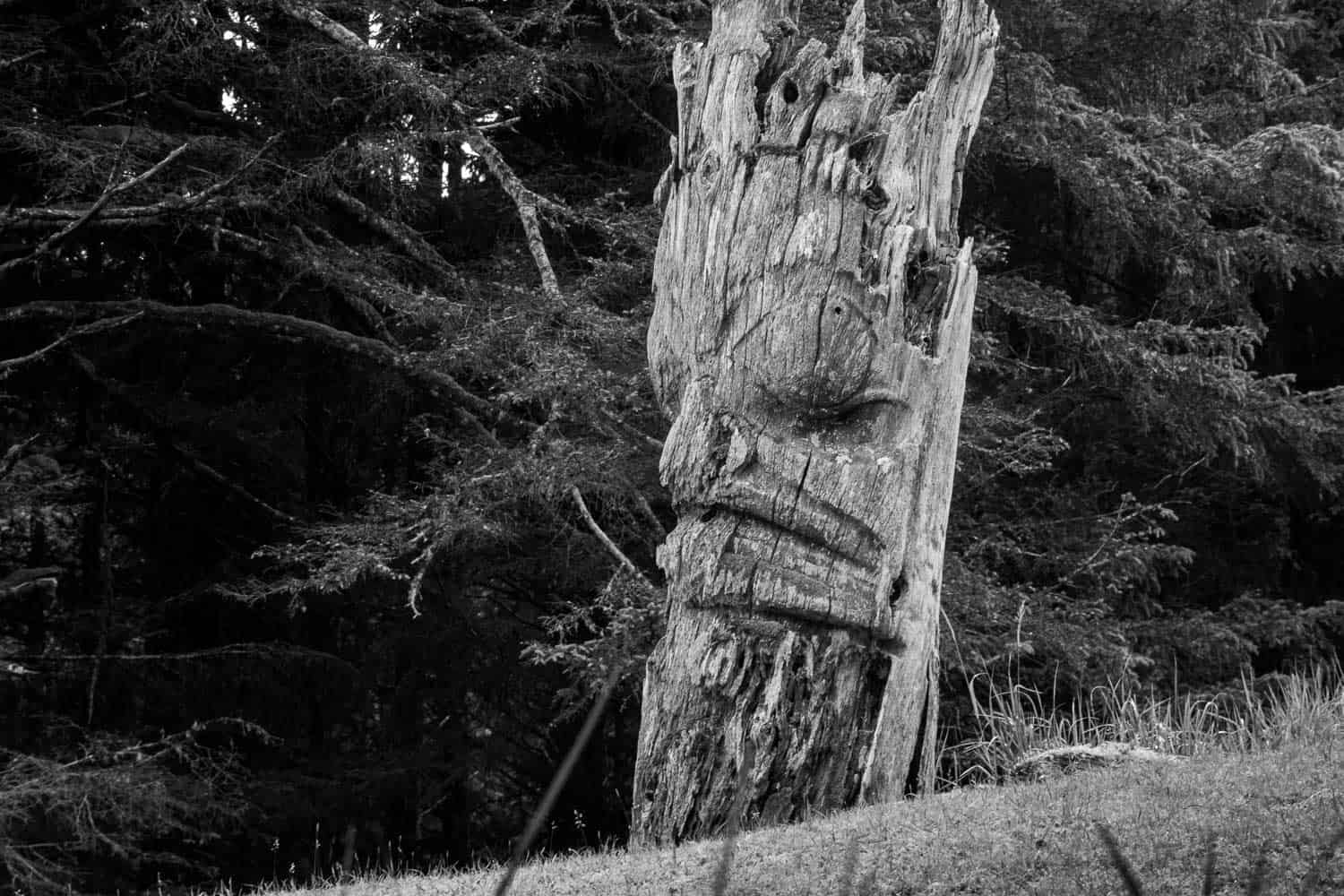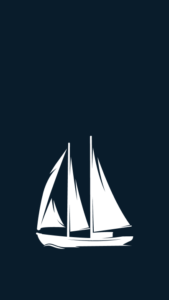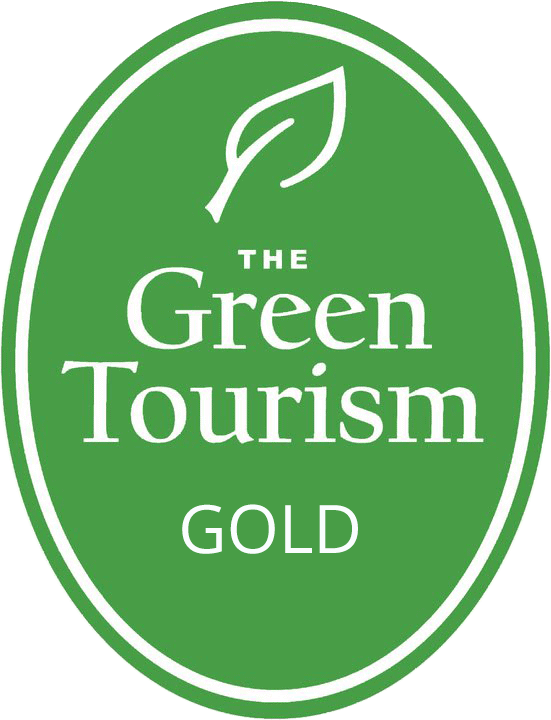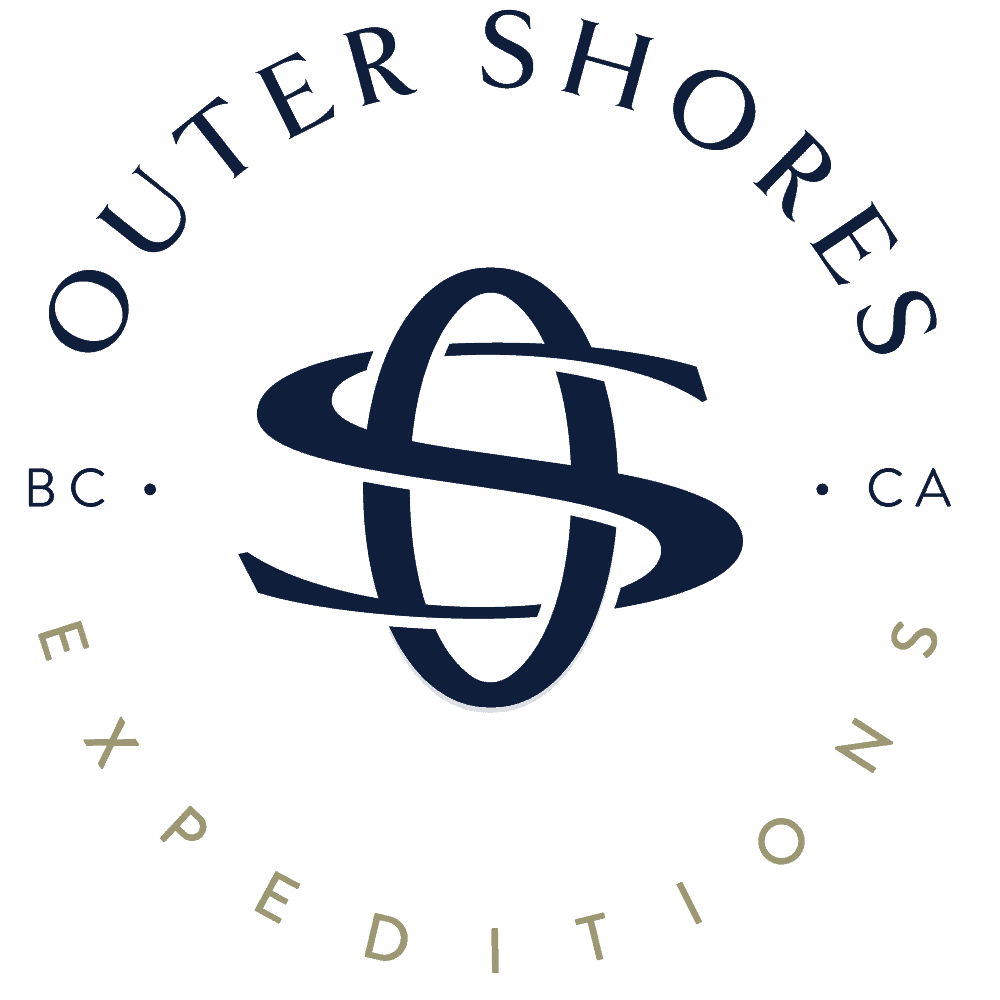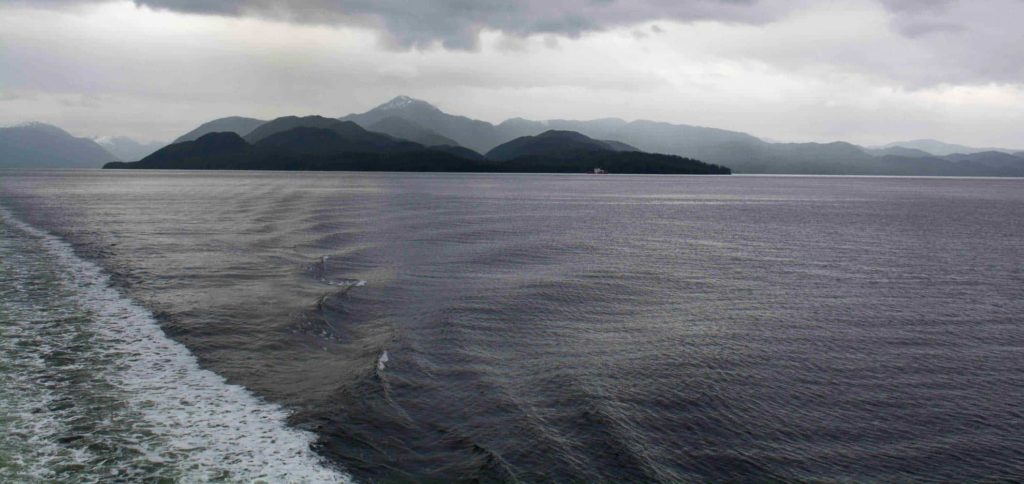
North by night – a nocturnal voyage through the Inside Passage
There are moments when you know things are about to change. That moment for me occurred when discussing the many intricate logistics that go into planning sailing expeditions in the remote region of Haida Gwaii. During one of many pre-season planning sessions, Russell and I mulled over the A, B, C, D options of any-case-scenario. I mention: “would it be crazy for me to move to Haida Gwaii for the summer…?”
Expecting a light-hearted, soft ‘no’, his reply to follow was, “well, actually, no that wouldn’t be crazy at all.” That’s when the seemingly crazy notion of moving to the remote island archipelago became a palpable reality. And so my journey begins. North by night: Victoria>Port Hardy>Prince Rupert>Skidegate. 575 km driving, 274 nautical miles up the Inside Passage, a 7-hour layover, and a final 93 nautical miles across the Hecate Strait.
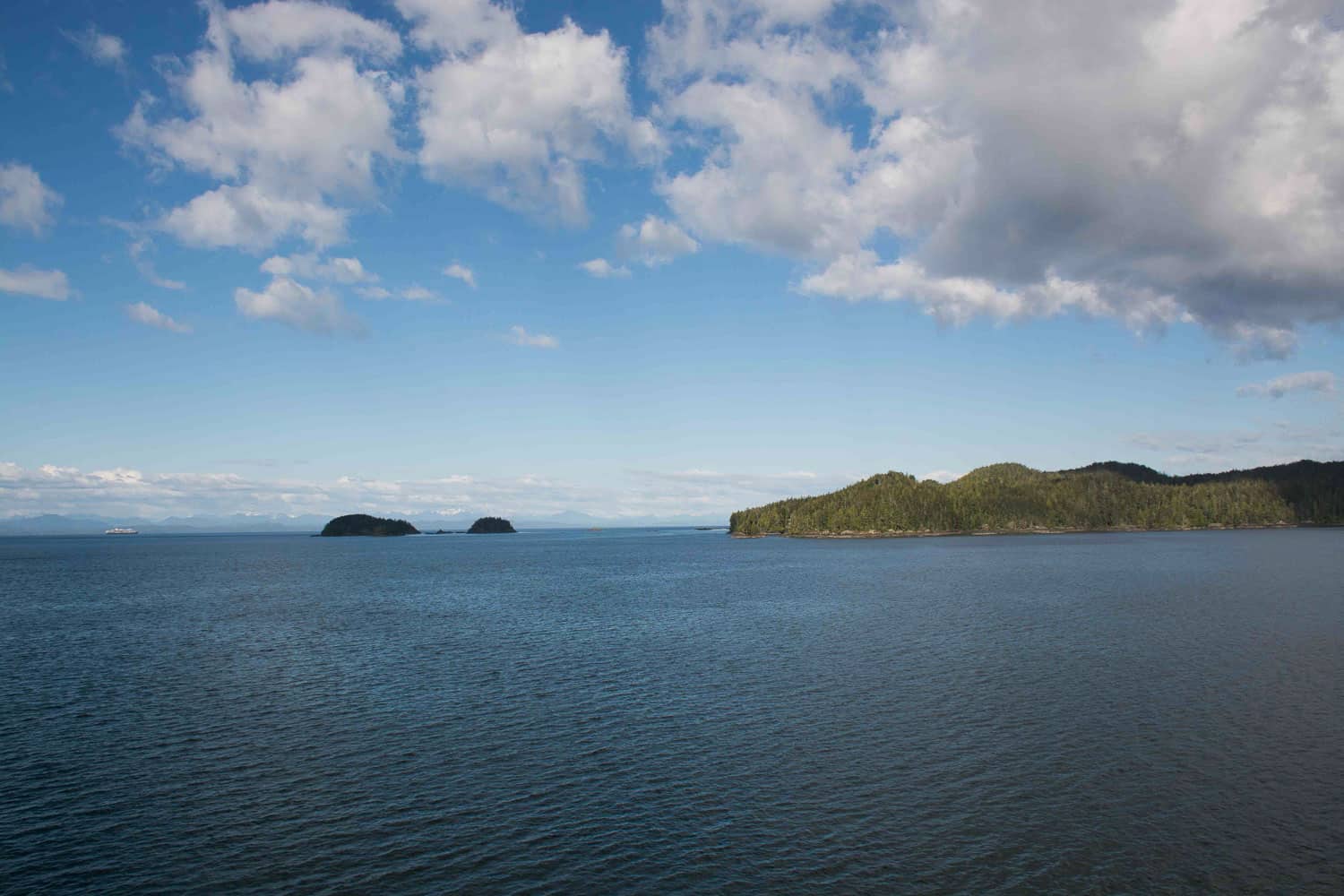
I board the ferry amidst biologists and field workers heading north for their summer field placements, European travellers looking for the slower scenic route, paddlers, and the northern residents (the non-orca variety) enduring the long transit home. Scattered on the upper deck of the vessel ‘Northern Adventure”, this collection of varied travellers await our departure, absorbing the warm summer sun that’s been so long awaited. We’ll get underway shortly and leave the Port Hardy shore behind, to meander our way through a myriad of islands and narrow glacier-carved fjords and passageways – The Inside Passage – north to Prince Rupert.
We set off on our transit, and I watch Vancouver Island sink back into the distance as we head out into the open rolling swell of the Queen Charlotte Sound. Today is a calm day. I can only imagine a rough day at sea for this section of crossing, exposed and completely vulnerable to the open Pacific.
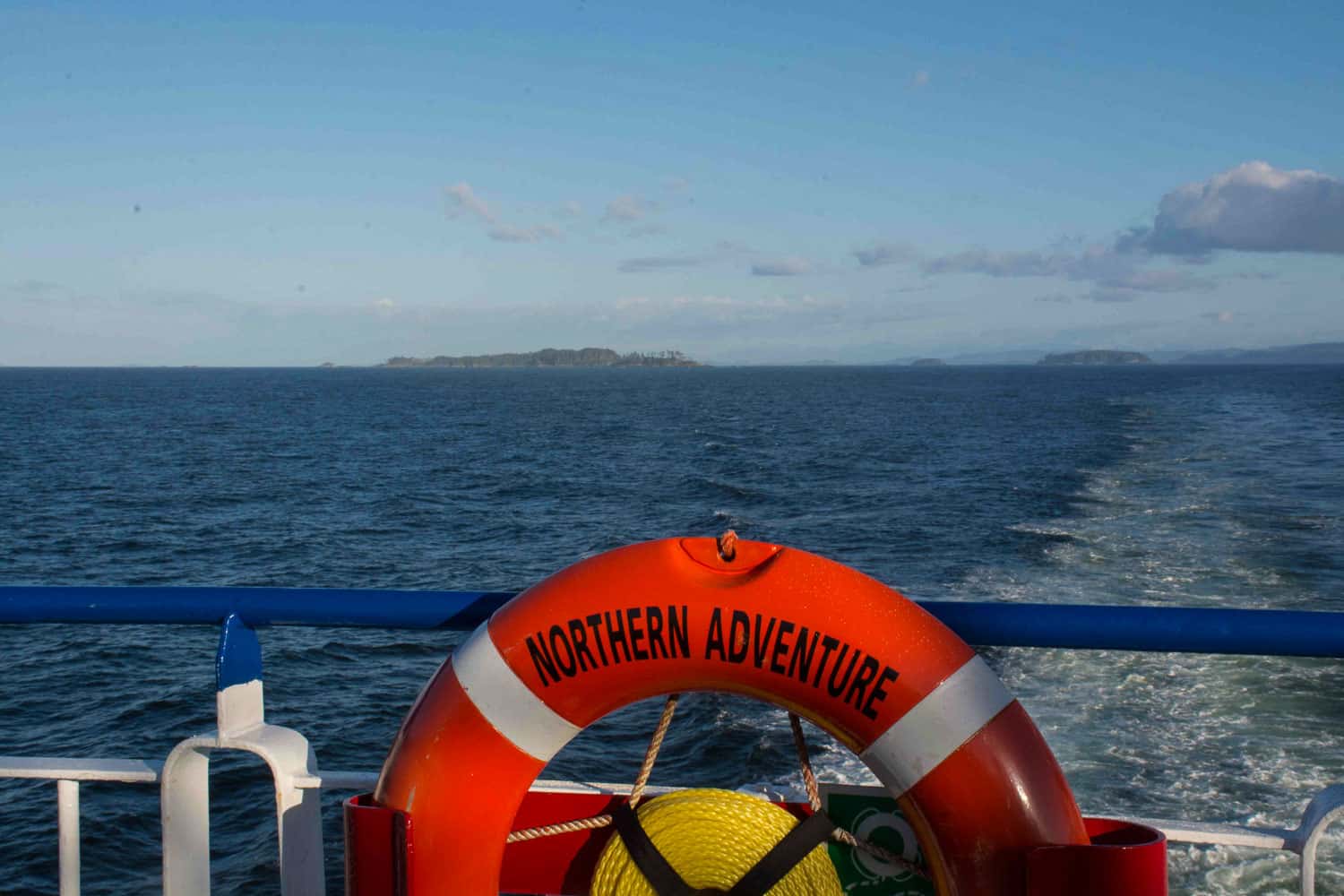
Several hours in I’m amazed at how few whales there are on this voyage thus far. By 60 nautical miles into our Great Bear Sea expedition last August we had already spotted a dozen or so humpback whales, and by day 3 we had lost count at around 50 whales! As we approach Whale Channel – which seemed aptly named last summer – waters remain still. Could it be we’re too early and the whales haven’t returned from their winter away? Or perhaps this vessel is far too loud and the whales could hear us from miles away.
Hours later, I see 4 splashes in the water; 5,6,7, fast approaching, heading straight for us. At that speed, I knew they were Dall’s porpoises coming to ride the ship’s wake. Just as quickly as they had come, they were gone, off to find entertainment elsewhere. I recall a similar encounter last summer from the Passing Cloud, although from the deck of a sailboat, the porpoises were so close you could actually see their black and white bodies under the water as they weaved back and forth playing in the wake. From the ferry it was hard to decipher anything but splashes as they breached the surface. I wonder if they could be the same pod a year later.
We enter the mouth of the Douglas Channel. This was the proposed oil tanker traffic route for the Enbridge pipeline, which was rejected late last year by the federal government after years of opposition.

To the west lies Cetacea Lab, an active research station studying whales –humpback, fin, and orca. They document sightings and behaviour, photo identification, and monitor and record underwater vocalizations. Cetacea Lab was – and still is –instrumental in the marine mammal data collection, vital in the environmental process leading to the rejection of the pipeline. This data showed just how active this region is and how much would be at risk with increased traffic, increased noise, and heaven-forbid, if ever a spill. Which would not only destroy the habitat for these whales but also ruin the livelihood of the Coastal First Nations who have relied on these waters as a food source for millennia.
It was here last year that we enjoyed a sunset dinner on the aft deck of the Passing Cloud. I recall a BC Ferries vessel – perhaps this very same one – travelling past in the distance and thinking how lucky we were to be sitting there, just 11 of us, enjoying local halibut, paired with BC rose wine, as we sipped in the pink hues of the setting sun, or was it from our glass – who’s to say… My glasses were definitely rose coloured on that day. The glassy sea reflected a mirror image of the sky, giving an effect of floating through a weightless oblivion. A humpback whale takes a breath, breaching the surface and breaking the silence of a perfect moment.
I digress; the same place, different moment. As I sit on the ferry, looking out to the grey morning, staring through the salt spray windows as the engine rattles us along, I realize just how special that experience was, and am transported back, if only for a moment.
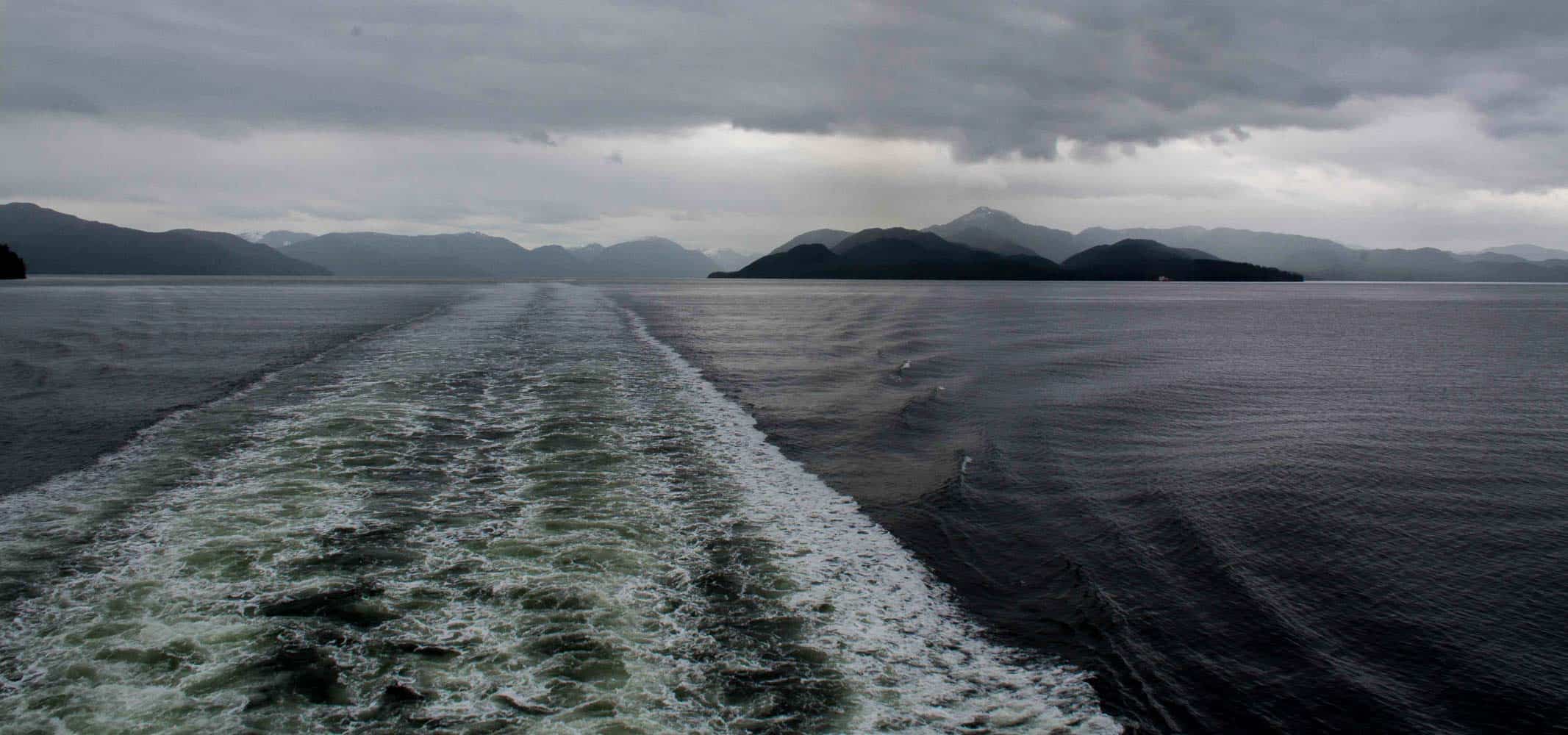
As the cloud level rises, the layers of the mountains become more and more pronounced, creating a tapestry against the sea. Horizons lost in the mist, where the sea swallows the rainforest by the mouthful.
Just when I think it must be too early in the season for whales, the First Officer of the bridge announces there are orcas off the port side. I rush top-side to catch a glimpse, but they appear to be in transit at high-speeds south; maybe 30 km/hr our opposite. They were on the move. There seemed to be 6 or 7, and another 4 or 5 following behind.
My guess is they were members of the northern resident community (totalling 274 whales, based on the last count) making their way to Vancouver Island for their summer feeding grounds. Although they could very well be transient, or Bigg’s, killer whales – marine-mammal-eaters – in search of those Dall’s porpoises from a ways back. A black and white body breaks the surface with a mighty breach slapping down on its side. Too far away for a photograph, but it’s moments like this that remain imprinted in memory.
And as we approach the industrial harbour of Prince Rupert, lined with scalped mountain tops, and bleak signs of human industrialization, I am reminded again at how close the threat of decimation really is, and how necessary it is to do all we can to protect this last great wilderness.
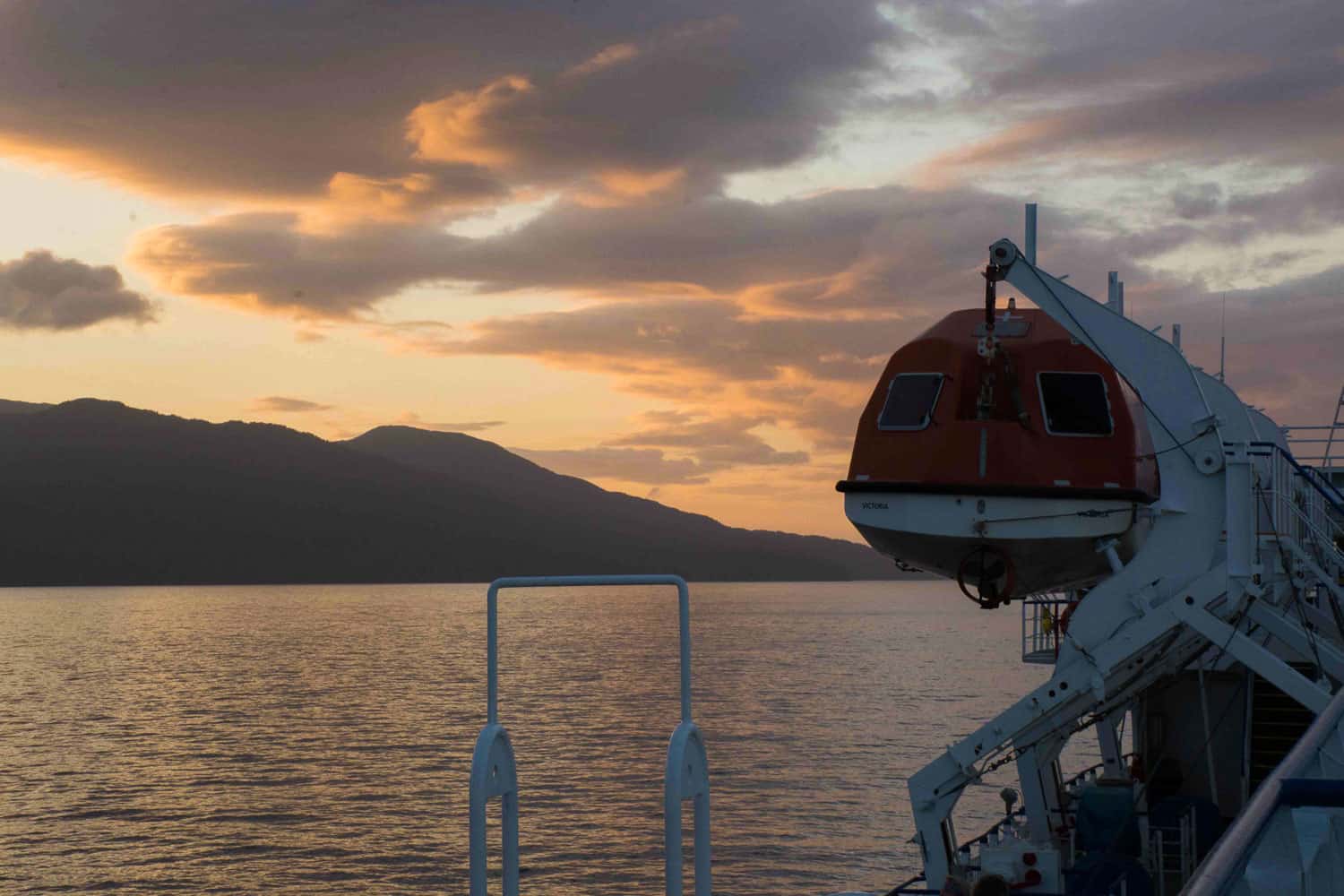
After my 7-hour layover in Prince Rupert, I boarded yet another night ferry. At this time of year the sun doesn’t set until 10 o’clock when you’re at 54 degrees north.
We pull out of the harbour and head for the open ocean. The captain announces there’s 2-3 metre swell and will be a rocky ride across to Hecate Strait. After posting up for the night in the ship’s lounge, I was rocked to sleep by heavy rolling swell and would wake in fits in a lucid dream-state from the sounds of the sea splashing against the hull. There’s something very different about sleeping at sea. I have always found it incredibly soothing, although, with the unpredictable waters of the Hecate Strait and the constant hum of the diesel engines, I felt less at home on this night. It just doesn’t compare to a night aboard the Passing Cloud from a protected wilderness anchorage.

After a bumpy crossing, the seas become flat as we enter the safe waters surrounded by Graham Island to the north and Moresby to the south. It’s 5:50 am and the mist lining the islands has a hypnotic effect – it could be the lack of sleep, but I think it’s something more. I have arrived. Haida Gwaii exploration is one of expression and a unique experience for each individual. To me, it is so much more than exploring land and seascapes. It’s about exploring the cultural fabric which embodies Haida Gwaii. There are few words that truly explain how I feel about this land of mysterious and otherworldly presence. Follow along, and I will do my best to share these moments with you.
